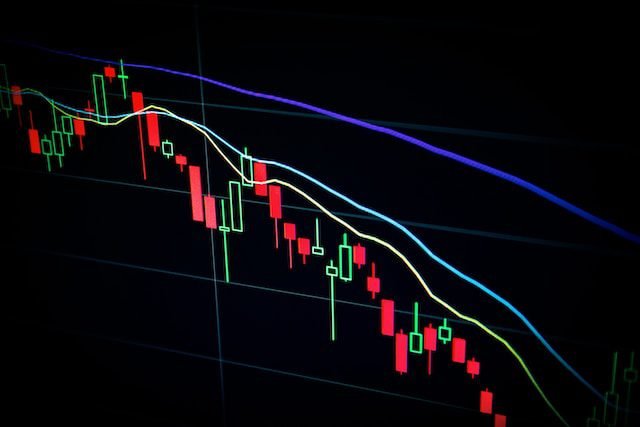Los Angeles: First Republic Bank received a $30 billion deposit injection from large US banks on Thursday, stepping in to save the institution who was embroiled in a growing crisis brought on by the failure of two other mid-size US lenders over the previous week.
After Silicon Valley Bank failed last week due to bond-related losses that mounted when interest rates spiked the previous year, concerns about what else might be hiding in the larger banking system have caused banking equities to decline globally.
By days, Credit Suisse, a Swiss lender, had become entangled in the market turbulence and was forced to borrow up to $54 billion from Switzerland’s central bank to maintain liquidity.
When global banks spearheaded a move to save First Republic, a regional lender whose shares had dropped 70% in the previous nine trading sessions, the emphasis suddenly whirled back to the United States on Thursday afternoon.
According to a statement from the banks, the rescue involved some of the largest names in American banking, including JPMorgan Chase & Co, Citigroup Inc, Bank of America Corp, Wells Fargo & Co, Goldman Sachs, and Morgan Stanley.
According to a person with knowledge of the matter, the arrangement was put up by influential figures such as US Treasury Secretary Janet Yellen, Federal Reserve Chairman Jerome Powell, and JPMorgan Bank CEO Jamie Dimon, who discussed the package on Tuesday.
US regulators praised the gesture of support, saying it demonstrated the banking system’s resiliency.
First Republic had access to $70 billion in funding after a round of fundraising on Sunday through JPMorgan. The failure of Signature Bank to survive after SVB did not, however, assuage investors’ fears of a contagion, and depositors started shifting money to larger lenders, assuaging their fears.
The rescue announcement caused First Republic Bank’s stock to close up 10%, but once the bank announced it would suspend its dividend, its shares dropped 18% in after-hours trade.
Since March 6, the bank’s stock price has decreased by more than 70%.
Wall Street indexes were helped by the news of the bailout as well. JP Morgan, Morgan Stanley, and Bank of America all had gains of over 1%, while the S&P 500 Banks Index regained 2.2%.
Despite the recent sell-off, smaller banks also recovered, with Fifth Third Bancorp, PNC Financial Services Group, and KeyCorp all posting gains of over 4%.
An emergency fund
Earlier in the day, as fears of contagion swept the banking industry and questions arose about whether central banks would be able to sustain aggressive interest rate hikes to contain inflation, Credit Suisse became the first significant global bank to accept an emergency lifeline since the 2008 financial crisis.
For some businesses, servicing or repaying loans has become more difficult as a result of rapidly rising interest rates, increasing the likelihood of losses for lenders who are already concerned about a recession.
The European Central Bank did, however, increase interest rates by 50 basis points on Thursday as indicated, highlighting the strength of the euro area banking sector while reassuring that it has a wide range of measures at its disposal to provide liquidity support if necessary.
At its upcoming meeting, the US Federal Reserve is anticipated to follow the ECB’s lead and raise interest rates by a quarter point, which just a few days ago appeared to be in jeopardy due to the turmoil in the banking industry.
The current unrest is different from the global financial catastrophe 15 years ago, policymakers have tried to underscore, because banks are better capitalised and cash are more readily available.
Nevertheless, central bank statistics released on Thursday also revealed that banks have recently requested record levels of emergency liquidity from the Federal Reserve, expanding the Fed’s balance sheet after months of decline.
“The figures, as we see them right here, are more consistent with the concept that this is really an idiosyncratic issue at a couple of banks,” said Thomas Simons, money market economist with investment bank Jefferies.
According to “decisive and forceful” efforts taken in the wake of Silicon Valley Bank’s failure, according to Yellen, the US financial sector is still stable.
One of the largest financial institutions in Europe, Allianz, claimed that, “unlike what happened during” the 2007–2008 financial crisis, authorities were “fully ready” to handle any liquidity problem.
Spending time
The largest European brand to be affected by the turbulence was Credit Suisse, a bank with a 167-year history, when its major investor stated it was unable to offer more funding due to regulatory restrictions.
The Swiss National Bank stated that it would lend liquidity to the bank in exchange for adequate collateral when the bank announced it would exercise an option to borrow up to 50 billion Swiss francs ($54 billion).
Thursday’s closing price for Credit Suisse shares was 19% higher, offsetting part of Wednesday’s 25% decline. Prior to SVB’s failure last week, European banks had lost over $165 billion in market value since March 8, according to data from Refinitiv.
Following a protracted decline in its shares, the stock market value of Switzerland’s second-largest bank has decreased by 90% from its peak in February 2007 of approximately $91 billion to approximately $8.66 billion.
Experts predicted that the measures would give Credit Suisse more time to complete a planned restructuring and possibly take other actions to reduce the size of the Swiss institution.





